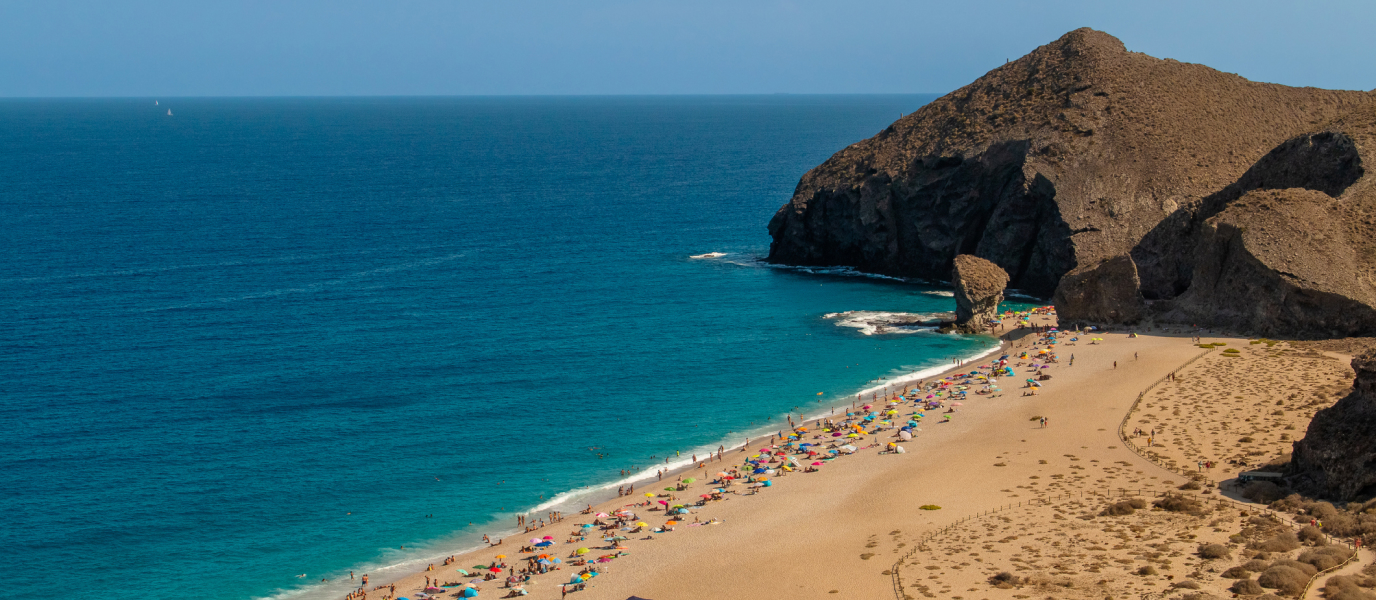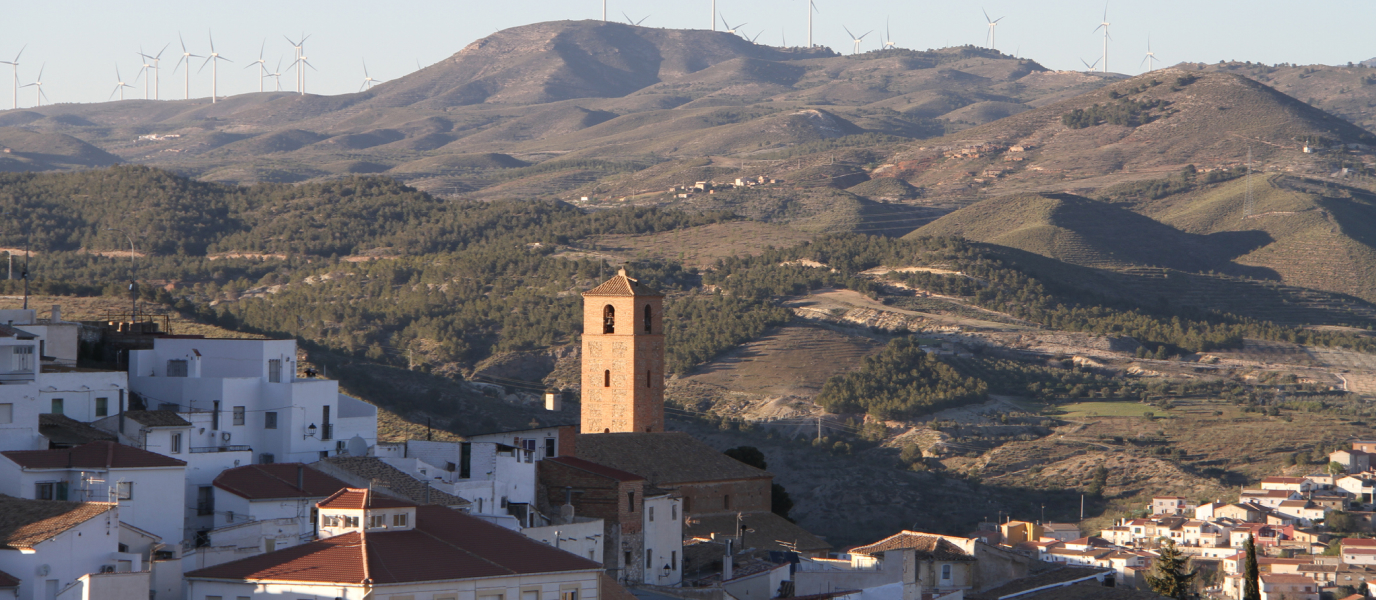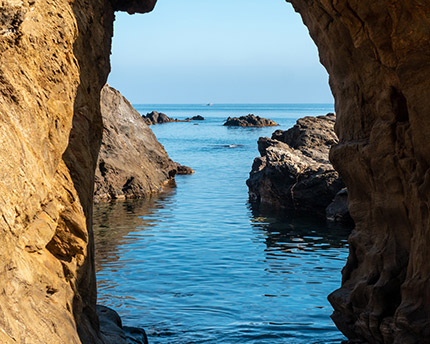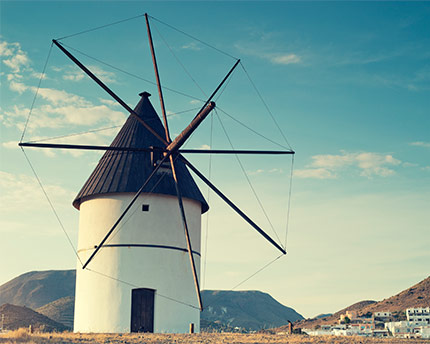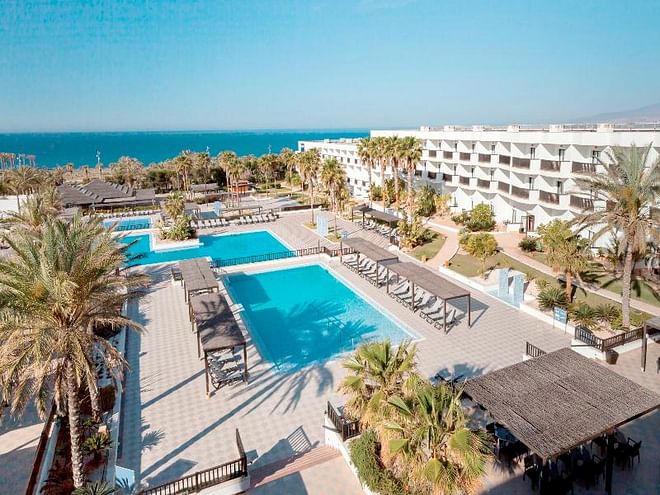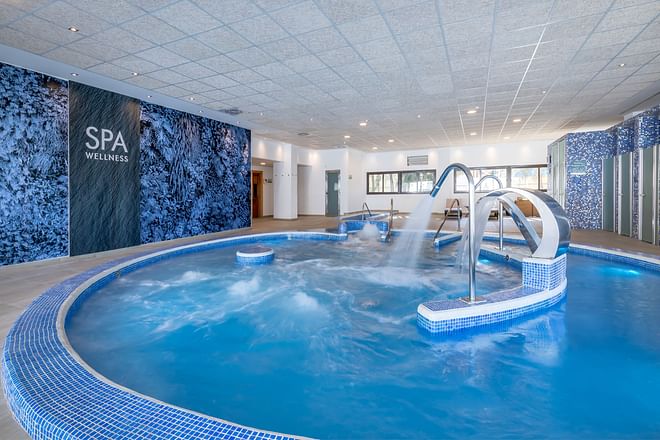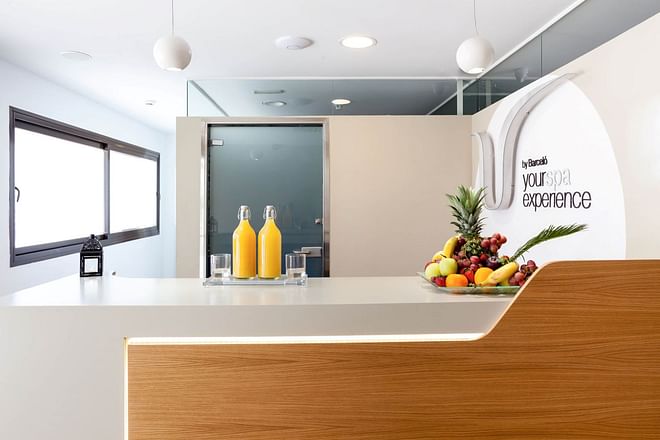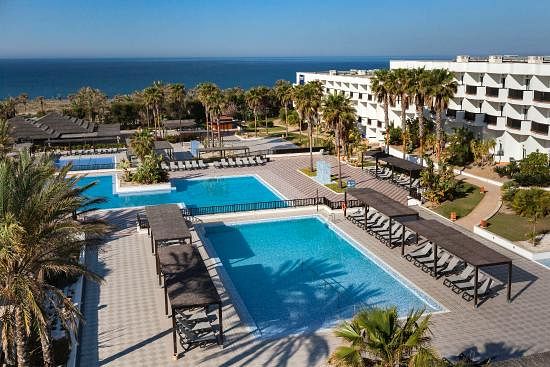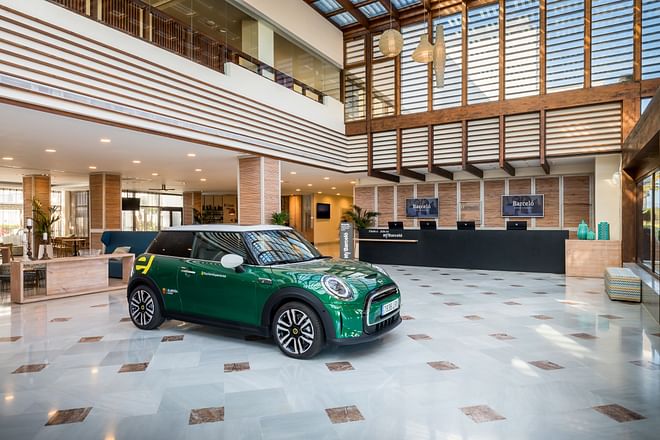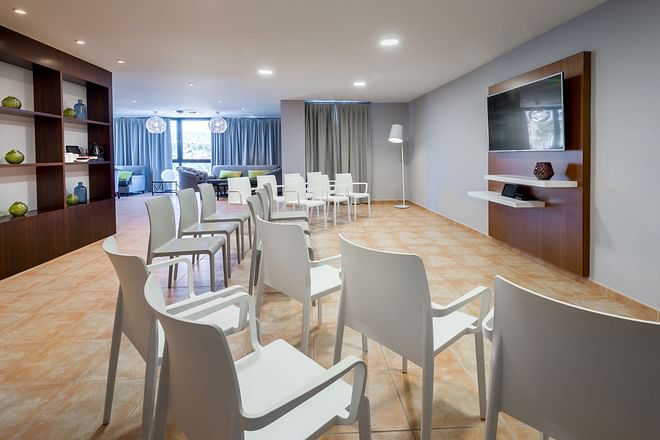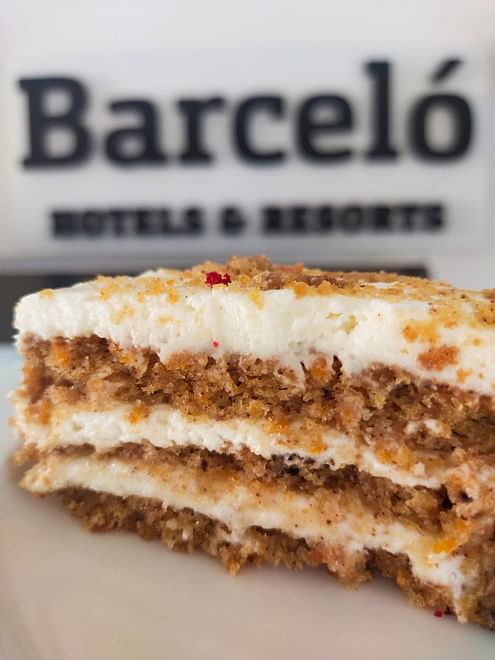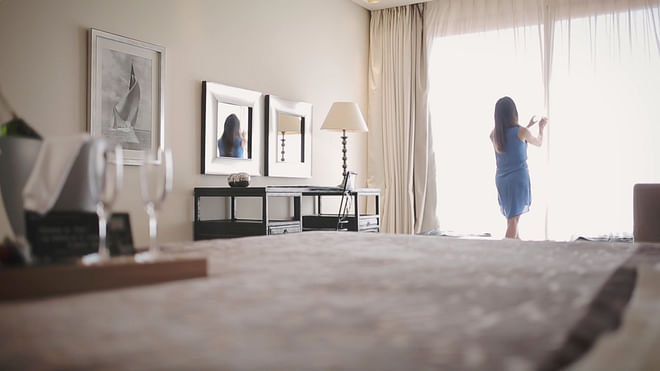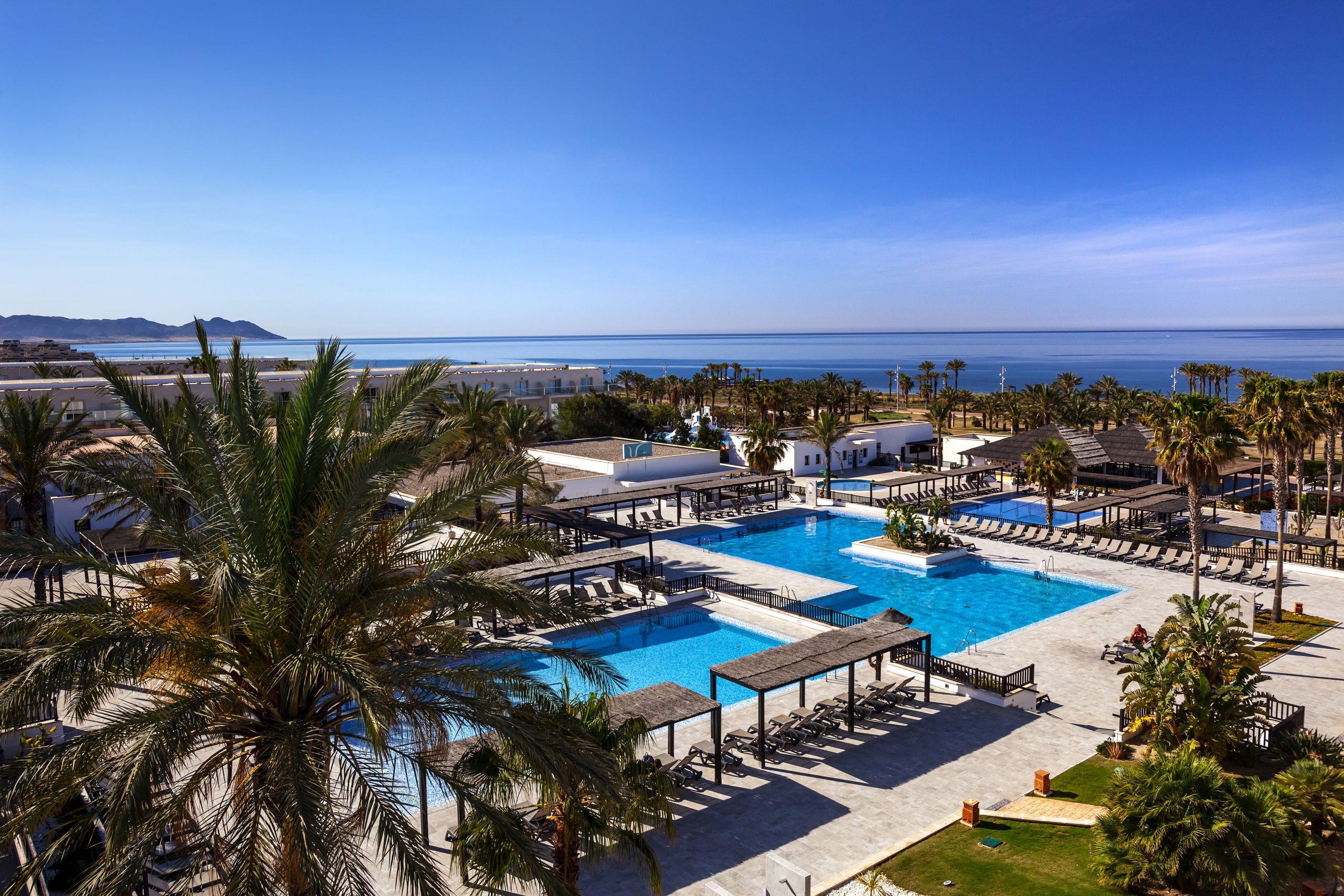Carboneras is one of the most thriving places in Cabo de Gata. At just 67 km from Almería and with a wild yet strangely beautiful natural setting, Carboneras has gradually transformed from small fishing village into top-notch tourism hub with all you could ask for from a Mediterranean coastal location: great food, vast beaches and an unbeatable landscape.
That said, the place has much more than just sun, sand and sea. Its attractions include the stunning viewpoint at the Mesa Roldán Lighthouse, San Andrés Castle and the amazing landscapes in the surrounding area. Here’s our pick of things to do in and around Carboneras.
Castillo de San Andrés
The name Carboneras is connected to the origin of the town. The Spanish word carbón means coal, and the town was founded partly because of the coal industry. The steep slopes that today surround the city were once lush forests of holm oak and other Mediterranean species. However, the advent of industry in the 16th century did away with the diversity of plant life.
Carboneras also served a defensive purpose. In 1559, King Philip II granted control over the municipality to the Marquis of Carpio. At that time, the coast of Andalusia – particularly the isolated area around Almería – was the preferred gateway of the Berber pirates, who came to raid these lands. The area experienced a prolonged and distressing period of social instability caused by the Morisco Revolt. The Marquis of Carpio built the Castillo de San Andrés to defend the region against both pirates and the Morisco uprising. This imposing box-like stone castle in the heart of Carboneras originally had three towers at each corner (two have been preserved), and a fourth quadrangular tower with three floors. Work to restore the castle was completed in 2013 and it’s now used as a cultural centre. It’s open every day during the morning and afternoon.
Carboneras, a tourism-friendly town
Carboneras’ past as a mining town is well behind it. Now, fishing tradition reigns supreme. The town tends to get swamped in summer, but you can head to one of its wonderful restaurants to really get a taste of life in what was once a modest fishing village.
The real speciality of Carboneras is the cleaver wrasse, a species only fished in the waters around this stretch of coastline. It’s white and similar in appearance to red mullet though slightly squashed in shape. This delicacy can cost up to 100 euros a kilo (you’ll pay less in and around Carboneras). The local prawns are another treat – head to Sol y Playa, El Cabo or El Pescado, among others, for some of the freshest.
For an enjoyable stroll, head to the Parque Andaluz between the huge promenade and the castle. The vast palm grove and beautiful gardens are perfect for letting the kids run free! The park also has an outdoor auditorium which stages all manner of cultural events.
Next to the Parque Andaluz is the Casa de la Música, a 19th-century stately home now operating as a theatre and music conservatory. Another stately home from the same period, the Casa de los Fuentes, is now the HQ of the Town Hall. It has a stunning viewpoint over the coast called the Solarium.
Beaches in and around Carboneras
Carboneras is perhaps most famous for the Playa de los Muertos, one of the most beautiful and breathtaking beaches in all of Spain.
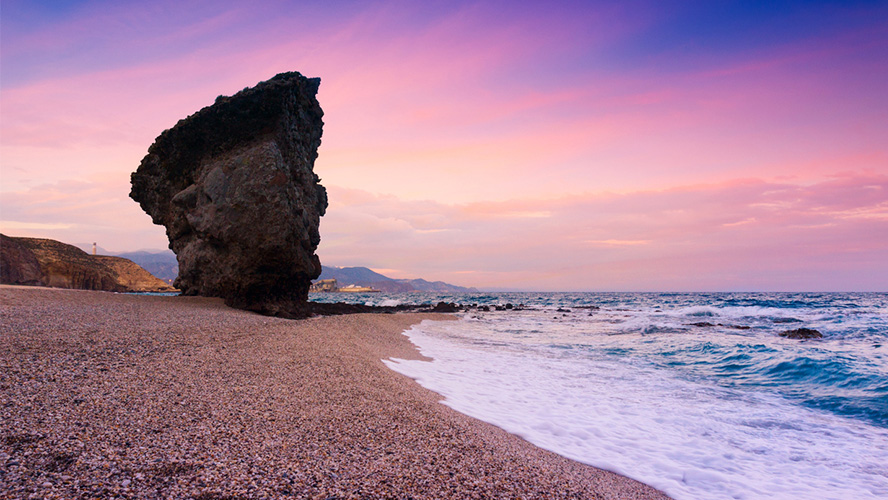
There are many more beaches in and around the town worth visiting, among them Playa de las Marinicas, Playa de los Cocones and Playa del Arcón. Las Marinicas is located between the power station and the fishing port. It’s 1.5 km long and has calm waters, making it great for a family beach day. Further along from the port, stretching to the point in front of the small San Andrés island, is Playa de los Cocones, where the seabed quickly drops off to more than 650 metres – no wonder it’s a favourite spot among divers! The promenade begins in this zone.
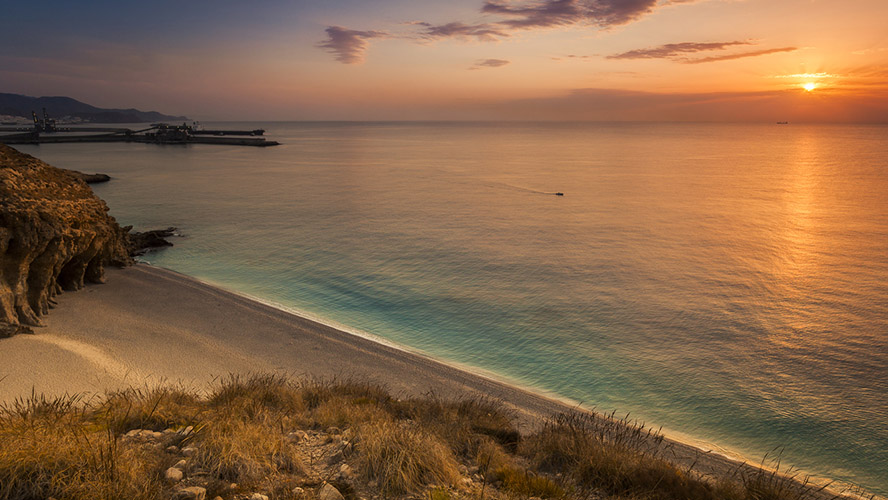
Carry on past the small headland to reach the vast Playa del Arcón. Stretching 1.5 km, this is the most popular beach in the area and has various facilities including lifeguards, disabled access and more.
Further north past the Torre del Rayo, the Cala La Galera lies hidden among cliffs and wilder scenery. Heading in the other direction, the Cala El Corral is 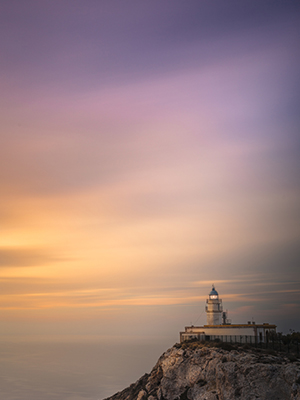 around 3 km south of the town and very close to Playa de los Muertos. The beach in this cove has coarse shingle lapped by turquoise waters, not to mention natural pools which are popular with families.
around 3 km south of the town and very close to Playa de los Muertos. The beach in this cove has coarse shingle lapped by turquoise waters, not to mention natural pools which are popular with families.
Mesa de Roldán Lighthouse
Heading south from Playa de los Muertos, right in the Parque Natural Cabo de Gata-Níjar, is the highest cliff in Almería. This spectacular formation is topped by a plain called the Mesa Roldán, crowned with an 18th-century watchtower. Historical records suggest there were defensive buildings here as far back as the 15th century. The Mesa de Roldán Lighthouse was built in 1863, just a few metres from the watchtower.
Together, the lighthouse and tower rise up from the highest point on the Almerian coast, gazing across breathtaking panoramic views.




































































